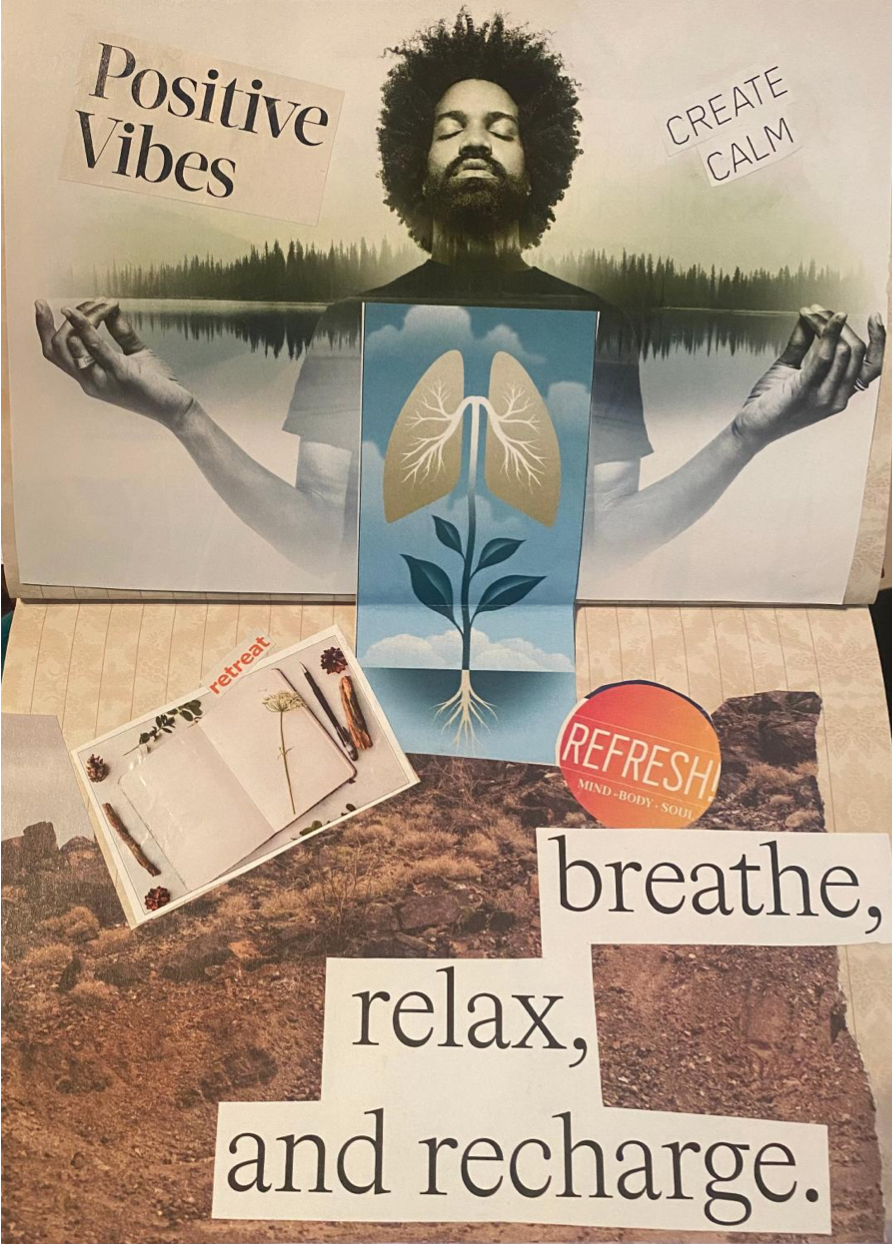February 22, 2023 | Natasha Green, MA, ATR
A Black client stated to me once, “I’ve been putting off beginning therapy for a long time. I’ve looked into different therapy and counseling groups and companies, and they all seemed the same. When I came across your profile and the way you describe the therapy process from the art therapy approach, it was different and seemed like something that I could see myself doing. I’ve been trying to find a creative outlet to help me.”
Many BIPOC clients of mine have voiced that they feel art therapy is a safer, less intrusive introduction to therapy. Art making encourages self-exploration and expression. It encourages more vulnerability simply through art being an expression of oneself. By externalizing their emotions, thoughts, and behaviors through art, they may feel less judgment and/or shame toward themselves. Art making may give clients an increased sense of control over what they disclose. Art therapy also does not carry some of the same stigmas that talk therapy does. As the Black community specifically is still struggling with overcoming the detrimental impact of stigma surrounding mental health care, art therapy can be a more welcoming, less threatening approach to support their needs.
Supporting my BIPOC Clients
Many of us art therapists were trained to not self-disclose to clients. We studied psychologists and theories of psychology through the lens of eurocentricity. Through my work, I have learned that this approach is often incompatible with building rapport with my BIPOC clients. For example, I had a client who was of similar ethnic background to me, she was the same age, zodiac sign, and even similar profession. In the years we worked together, I never disclosed that I had children. Her not yet having children and wanting them was often a topic of discussion. One day I needed to reschedule due to a conflict with childcare and I relayed this to her, hesitantly. Her reaction was not what I anticipated. She was surprised and seemed almost in disbelief. Finding out I had children was a source of encouragement for her stating, “I now know that it is possible to have it all; a career and a family.” This made me think about the therapeutic benefits of self-disclosure.

This collage represents the healing space I am intentional in creating for each of my clients.
I personally believe that naturally through the artmaking process, we express who we are. Collective art-making, whether that be working on individual or collaborative art pieces, sets the precedence for more rapport, relationship building, and connection. Art making in itself promotes authenticity without intrusion. However, showing up as our authentic selves as art therapists does not mean fully disclosing details of ourselves and our lives. That being said, it is important to rethink what it means to be authentic and self-disclosing for us as art therapists and for our clients. What is our clinical rationale for what we choose to disclose and when? When do we create alongside our clients? When do we participate in group art making? When and to what extent do we share and process our own artwork?
The artwork itself adds an additional layer to the disclosure conversation. Taking into account that artwork is subjective, can we then use what we know of our clients and their experiences to verbalize how we interpret their artwork? Whichever approach you personally choose, it comes down to being authentic and clinically aware of our motives for disclosure.

“Empathy”. This sculpture was created to express my belief that empathy is my greatest strength as an art therapist. It demonstrates my ability to hold space for my clients.

This is my cultural doll I created in graduate school. Her attire represents my racial identity, Black and Japanese, through her kimono and the symbolism of her all black outfit underneath. Her camo headband represents the military culture I grew up in. The winking eye alludes to my zodiac sign as a Pisces in that I am both grounded in reality and able to get lost in my imagination.
Showing Up as My Authentic Self
One powerful way to be authentic is through self-disclosure of our emotional responses to clients. Allowing clients to see me tear up when hearing of the abuse they endured. Verbalizing how something they said makes me feel. Modeling how to communicate these emotions in a productive way while also humanizing myself as a therapist. Encouraging clients to not only allow themselves to be vulnerable, but to also embrace that feeling and name it. Crying is often the physical expression when we feel our emotions at their height. Authenticity through sharing my emotional responses invites clients to be authentic and feel safe in the therapy room.
In Western society, crying is viewed and internalized as a weakness. As a therapist, I not only encourage it when a client cries, but I validate and celebrate it. To me, when a client cries, it indicates that I contained enough to allow them to express the most vulnerable part of themselves. The majority of the clients that I have the most rapport with were clients who cried during our first intake session. By showing up as my true authentic self, I have found that clients can not only feel that but find relief in it.
For a BIPOC individual, showing up authentically means being able to be true to who you are without concern for assimilation. This is difficult to do in a society where your whole self is not accepted in many spaces. Art therapy can be a safe, less intrusive approach to therapy for the BIPOC communities when self-disclosure of an art therapist further inspires authenticity and rapport building with BIPOC clients. As a BIPOC art therapist, showing up as my authentic self by incorporating cultural references, terminology, and my artwork into my practice allows my BIPOC clients to feel safe enough to also show up with what is true to them and their culture.
About Natasha Green, MA, ATR

Natasha Green is a registered art therapist. Natasha obtained her bachelor’s degree in Art from the University of Minnesota and her master’s degree in Adlerian Art Therapy and Adlerian Counseling and Psychotherapy from Adler Graduate School. Natasha is currently a board member for the Minnesota Art Therapy Association. She works in private practice at Green Amethyst Art Therapy working with individuals 13 and older, and is also the founder of Green Amethyst Healing Grounds providing open studio community-based art therapy.
Connect with Natasha on Facebook or Instagram at @greenamethystarttherapy.
